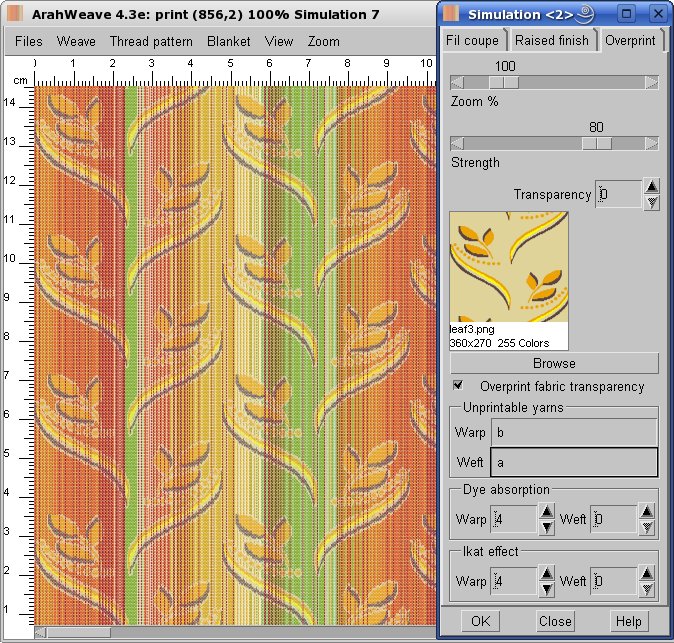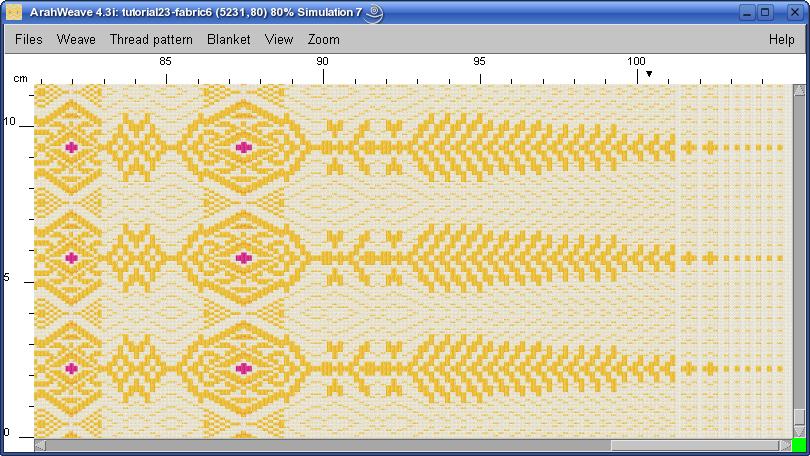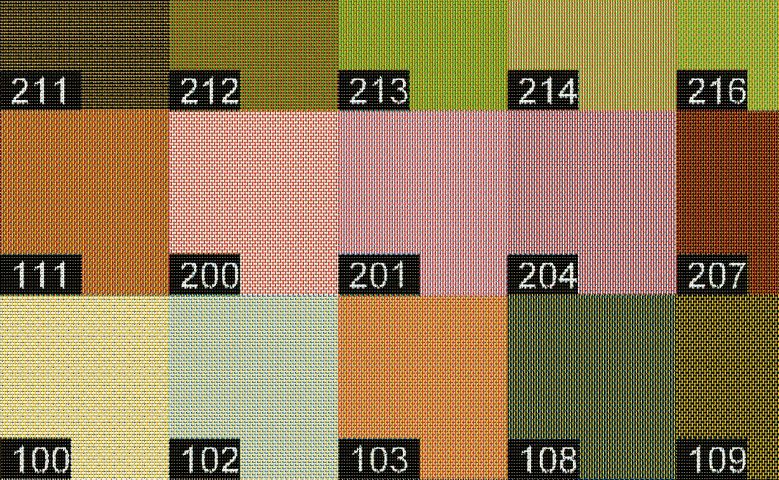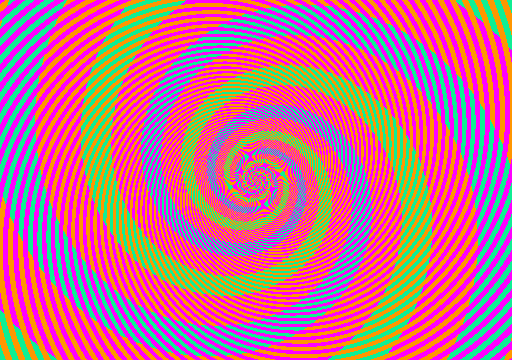

TUTORIALS
Simula la tintura dei filati
We will start this tutorial with a book recommendation. It is entitled Swatches: A Sourcebook of Patterns with More Than 600 Fabric Designs, by Dorsey Sitley Adler and Robert D. Adler. We should also thank the Powells bookstore in Portand, Oregon for having such a huge collection of books on their shelves, available for everyone to browse. You can buy the book here. The Swatches book contains pictures of many beautiful dobby and jacquard fabrics, and we have chosen to use ArahWeave software to simulate a fabric with space dyed yarns. You will find it in the book on page 153.

Open ArahWeave software for weaving and load (or create) a plaid fabric, in which you want to use fancy yarns. It should not be too difficult to change the weave to plain weave, and to write the warp and weft pattern. If you have problems with warp/weft pattern, you will be able to read it towards the end of this tutorial.

Choose Fabric > Yarns. Select a yarn, which you want to edit. It is a good idea to set all the yarn parameters (count) for the yarn, which is most similar to the yarn you want to draw (like for example, melange), and then switch Model from Simple to Custom. If you want to use more colors in the yarn, modify the number of colors.

Then click on the Draw yarn button, and the Draw yarn window pops up.

It would be time consuming to draw all the twists and shades of the yarn, so first choose Edit > Clear shades. The weaving software will do the shades.

Since we want to make slub (or flamme) yarn, we have to make space (make the basic yarn thiner) in the drawing area. Choose diameter 2 as the pen size, and click the ![]() icon. It will thin the yarn for the number of points of the currently selected pen size.
icon. It will thin the yarn for the number of points of the currently selected pen size.

The information about the yarn repeat is written below colors. Simple yarns need one only one yarn twist of repeat. So the length of the yarn repeat is currently only 16 pixels, which means 0.593 millimeters at this yarn count. We need to increase the length of repeat of the fancy yarn, to match the yarn length used in the fabric. So we need to modify the length parameter. Each time you increase the length by 1, the length doubles. When we reach the desired value at about 38 millimeters, we can start with drawing.

Select the second color (red) and change drawing tool from free hand ![]() to rectangle
to rectangle ![]() . Let’s say that the length of color effect is 10 mm. Start to draw at distance 10 mm with left mouse button click, and drag a mouse to 20 mm (you can check this on the ruler).
. Let’s say that the length of color effect is 10 mm. Start to draw at distance 10 mm with left mouse button click, and drag a mouse to 20 mm (you can check this on the ruler).

If you need to delete any points with background color, just draw with right mouse button. You can also draw nicer transitions of the color effect by drawing over the borders with the spray tool. Don’t worry about the dotty appearance of the yarn, it will all look nice once you view it at 1:1 in the final fabric.

Now we need just to add new life to our yarn by Edit > Add top/bottom shades and Edit > Add twist.

You can now close the Draw yarn window. In the main Yarns window you can see the preview of the yarn. You can also save the yarn for future use.

If you wish to change the colors of the yarn, you can do this in the Colors window (Fabric > Colors). First click on the yarn sub-color you want to change in the bottom right angle of the window. Then select the color from the color palette, and copy it with right mouse button into the yarn table.

After setting the thread pattern (Fabric > Thread pattern)

… and density (Fabric > Density)

… you get the ArahWeave’s fabric simulation. We didn’t care to match the colors from the fabric in the book, since colors were changed in printing anyway. But the fabric structure and texture are there, don’t you agree?

A careful observer will also notice, that this fabric does not have a repeat, since each square is different. If you plan to use such a pattern with a texture mapping program like ArahDrape, make sure you generate several warp/weft pattern repeats of the texture. In this way you will diminish the ugly repeat errors on the borders of the “repeat”. ArahWeave’s printouts, on the other hand, will always be perfect, since the full fabric printout area is always calculated, not just one repeat.































